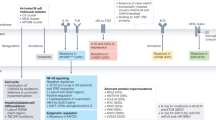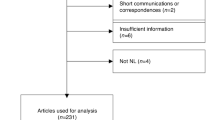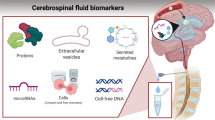Abstract
Of 100 children and adolescents with lymphoblastic leukaemia (ALL) seen over a 6-year period, 25 developed clinically evident infiltration of the central nervous system (CNS), despite early treatment with cranial radiotherapy and intrathecal methotrexate. Nine of these 25 had the features of T ALL, though there were only 17 such patients overall. Not only did those with T ALL get CNS disease more frequently, but they did so much sooner after diagnosis (P less than 0.001) and more commonly had associated facial palsies (P less than 0.05). The tendency to develop CNS infiltration appeared to be significantly related to the possession of T-cell markers (P less than 0.02), but not to the diagnostic white cell count (P = 0.37). These findings suggest that current CNS prophylactic therapy is ineffective in most patients with T ALL.
This is a preview of subscription content, access via your institution
Access options
Subscribe to this journal
Receive 24 print issues and online access
$259.00 per year
only $10.79 per issue
Buy this article
- Purchase on Springer Link
- Instant access to full article PDF
Prices may be subject to local taxes which are calculated during checkout
Similar content being viewed by others
Rights and permissions
About this article
Cite this article
Lilleyman, J., Sugden, P. T lymphoblastic leukaemia and the central nervous system. Br J Cancer 43, 320–323 (1981). https://doi.org/10.1038/bjc.1981.50
Issue Date:
DOI: https://doi.org/10.1038/bjc.1981.50



